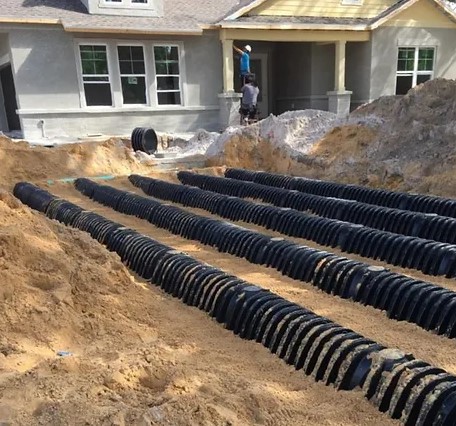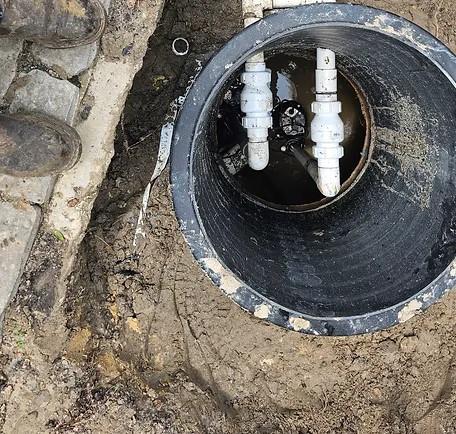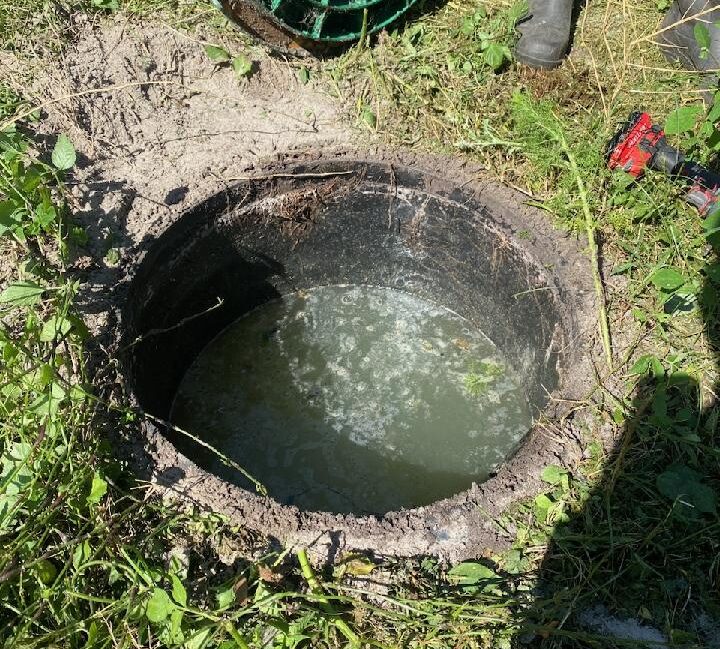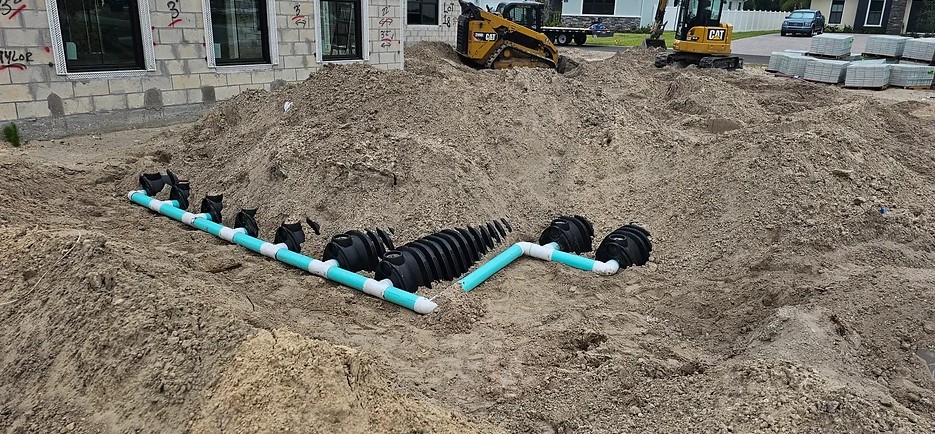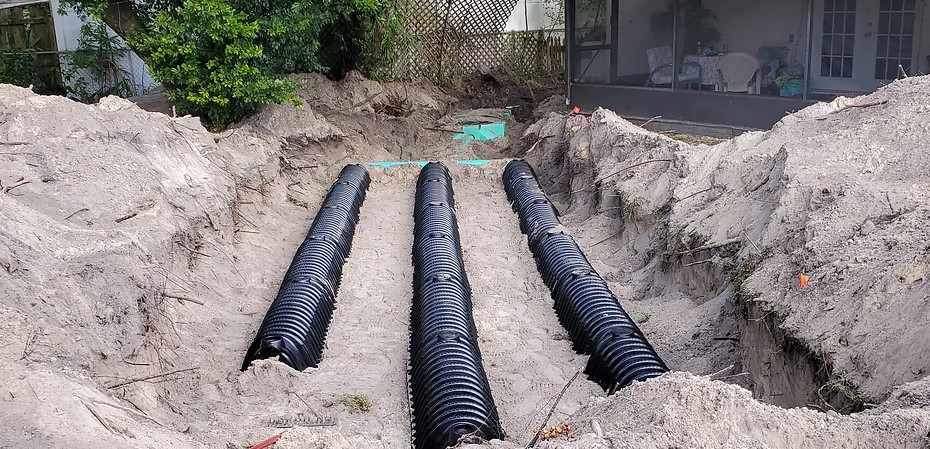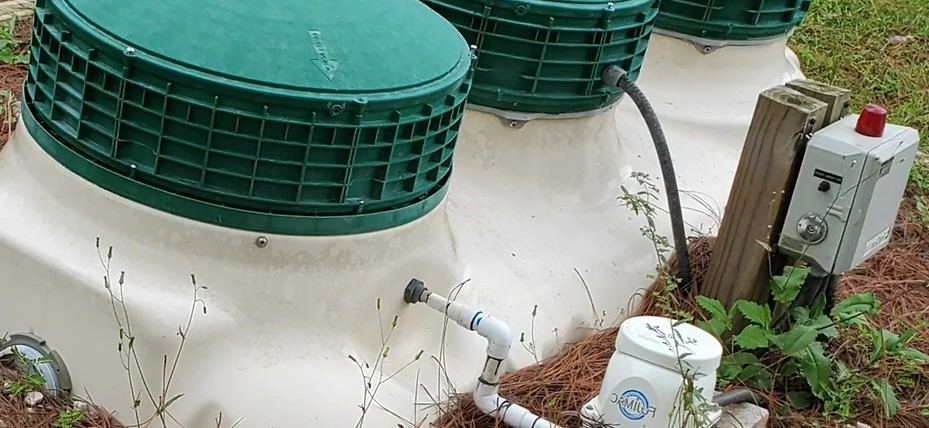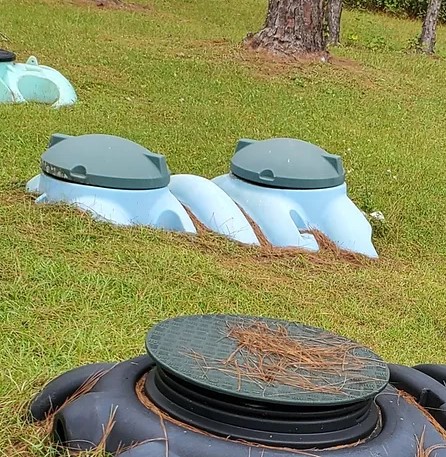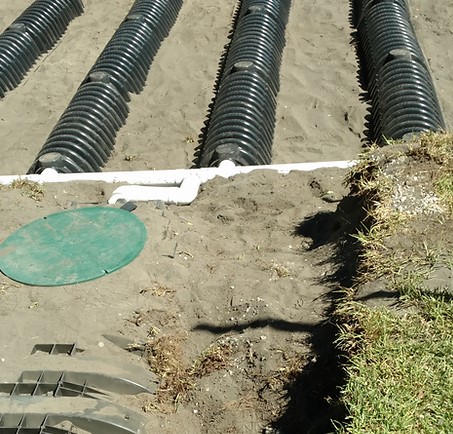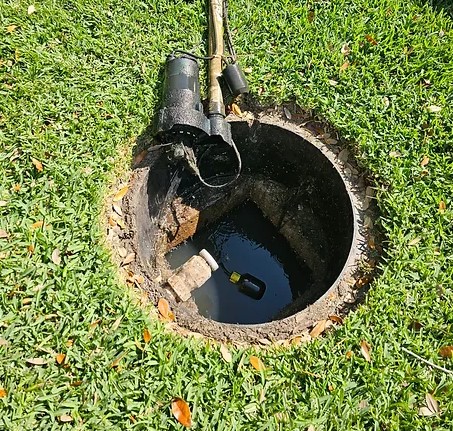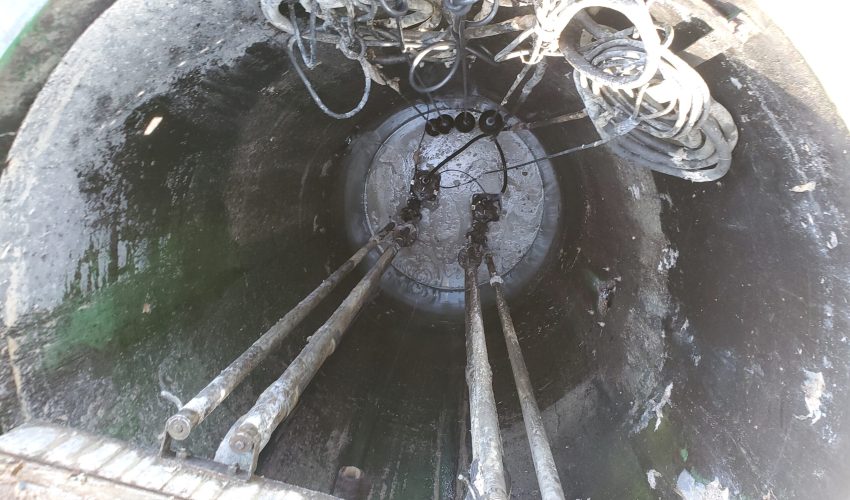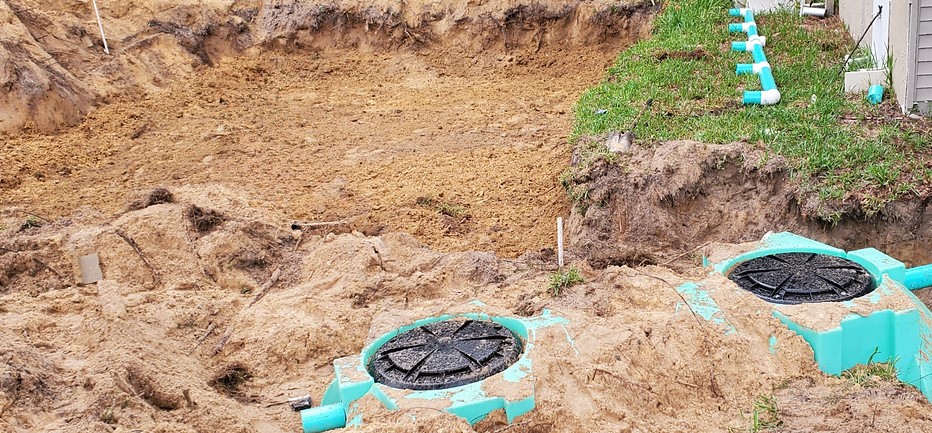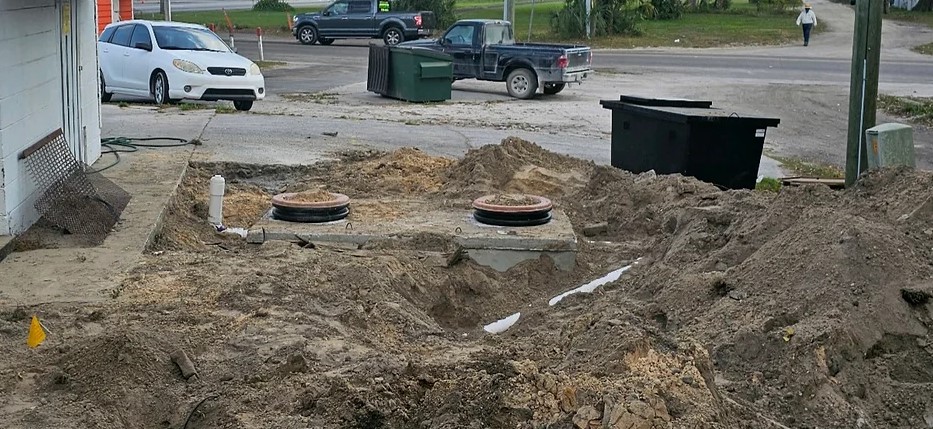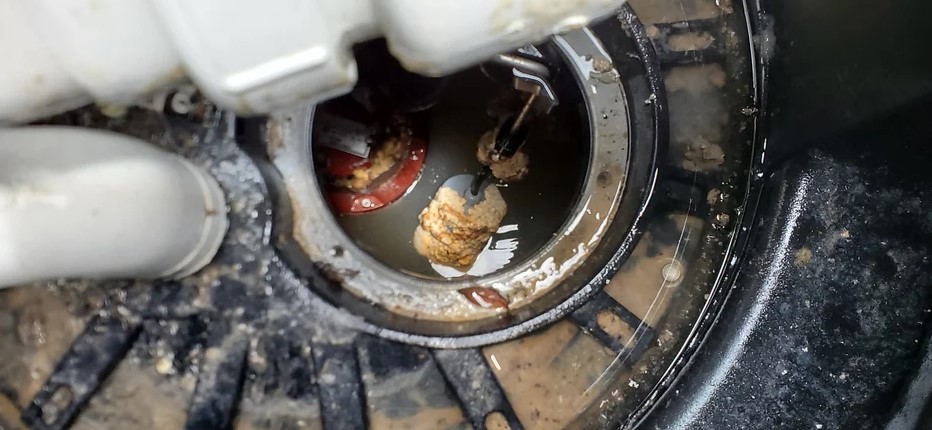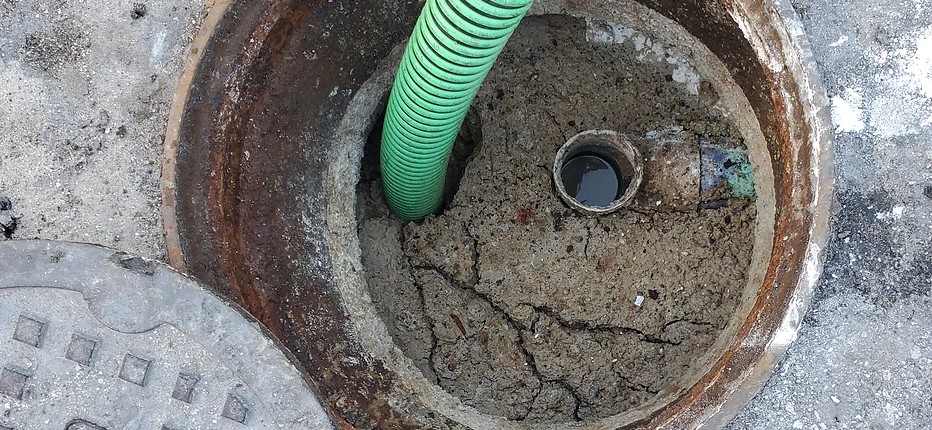SERVICES/gallery
AFFORDABLE SEPTIC SERVICES
Whether you’re looking for installation, maintenance, repairs, or emergency services, we’re here to ensure your septic system operates efficiently and effectively.
Residential Services
OFF GRID LIVING WITH A RESIDENTIAL SEPTIC SYSTEM
Many homes in the Central Florida area are on a septic system. Septic systems are effective and efficient, and can help those who strive to live remotely or off-grid. Septic systems make it possible to treat your own wastewater on your property without paying the local wastewater treatment plant (e.g., paying a sewer bill when you are connected to a sewer system). The residential septic system is an on-site wastewater treatment system, consisting of a septic tank and a drainfield. The tank is where solids accumulate, bacteria grows and microorganisms eat the solids. Liquid effluent then flows into the drainfield where the soil filters it before entering our aquifer water system. Although some liquid will evaporate into the air, most will drain into the soil, thus completing a natural and safe cycle.
REGULAR MAINTENANCE
Maintenance of your septic system is imperative to keep it operating correctly and to avoid costly repairs. Regular maintenance is the key to having peace of mind that your septic system will support your family and not back up into your home. If improperly maintained, your septic system can go from a useful on-site wastewater disposal system to a odor-inducing mess. SkyWalker Septic can inform you on recommended maintenance. Depending on its age and the type of septic system you have, your maintenance schedule can range from three times a year to once every three years. Over time, a septic system will accumulate wear and tear. Most drain fields last 20-30 years and tanks usually last 40+ years. Septic systems that are not maintained correctly will require more frequent repairs, but a well-maintained septic system will continue to perform and save its owners thousands. NOTE: All homes with a septic system will eventually need parts replaced to ensure proper function. Contact SkyWalker Septic today to learn about the maintenance your septic system needs to ensure that it functions properly for years to come!
SIGNS OF SEPTIC TANK ISSUES (OVERFULL OR NOT DRAINING)
Plumbing that gurgles is a warning sign of a potential future back-up.
Wastewater backing up into your drains (NOTE: More than one drain clogging is likely a septic issue. If only one drain or toilet is clogged, it may not be a septic system issue and you might need a plumber).
Foul smells or strong odors inside or outside near your septic tank.
Wet soil/water puddling near the septic system or wet spots in your yard when no rain events have happened recently are signs of a severe case of system failure.
Bright green and spongy grass areas or new foliage, especially in dry climates, is a sign of waste water contaminating your property.
NEW RESIDENTIAL SEPTIC SYSTEMS
We design and install new residential septic systems in Pasco, Hernando, Polk, Sumter and Hillsborough counties. When designing your septic system, we consider many things to ensure that the system is perfect for your needs. First, we will evaluate the volume of flow from your home or building to determine the correct size system to suit your needs. Next, we examine the soil types and the estimated wet season water table on your property to ensure that the system is not installed in wet conditions. We will then look at your lot layout and receive your input about the desired location of the system. Lastly, we install either a plastic or concrete septic tank depending on access, and a drain field that best fits your properties needs. Plastic Tank Benefits: Will not be affected by chemicals and it does not have material break down like concrete. Plastic tanks also allow for installation in areas where concrete tanks would be very difficult to install.
Concrete Tank Benefits: Concrete tanks are stronger than plastic tanks and can tolerate more weight or pressure before they incur damage. A concrete tank can also be ordered traffic-rated so it can withstand cars and trucks. Concrete usually lasts 40+ years, but the tank lifespan can be affected by chemicals and kitchen greases.
DRAINFIELDS
The drainfield absorbs the liquid part of the wastewater from the tank into the soil. While there are different types of drainfield systems, we prefer never to install styrofoam. We recommend INFILTRATOR chambers, either regular or low profile chambers (LowPros allow for a shallower installation because the material is 4in shorter, this could make the difference between needing a gravity system or lift station). We also install multi-pipe or 9-pipe type drainfields.
The DEP has recently announced beginning July 1st, 2023, a requirement that all new construction or bedroom additions with properties of one acre or less in the BMAP area must install advanced treatment systems meeting NSF245 standards. We will help you check this map to find out if you are located in a BMAP area. If BMAP is required in your area, we will be glad to review the different types of advanced septic systems and find the right one for your needs. We will also provide a free estimate.
You can view the areas that require ADVANCED TREATMENT SYSTEMS here:
https://fdep.maps.arcgis.com/apps/instant/sidebar/index.html?appid=dbb5433133db4012a4355a08cacaaa12
NITROGEN REDUCING DRAINFIELD SYSTEMS/ADVANCED TREATMENT SYSTEMS MEETING FLORIDA ADMINISTRATIVE CODE NSF245 STANDARDS
Nitrogen reducing systems, ATU (advanced treatment unit) systems and drip systems are all designed to meet NSF245 standards. These standards were developed to lower the amount of nitrogen entering the aquifer/freshwater supply. Too much nitrogen in the aquifer will lower the quality of Florida’s fresh water and drinking water. When excess algae is present in lakes and ponds, it is a sign that there are high amounts of nitrogen in the aquifer. Luckily, there are NSF245 compliant septic systems designed to help prevent high amounts of nitrogen being drained from your property. NSF245 compliant systems are required if your property is not large enough for the size septic system you need for the new home or building that is being constructed. Also, if your property is less than one acre, and located in the BMAP area, it is required to install a NSF245 compliant septic system as well.
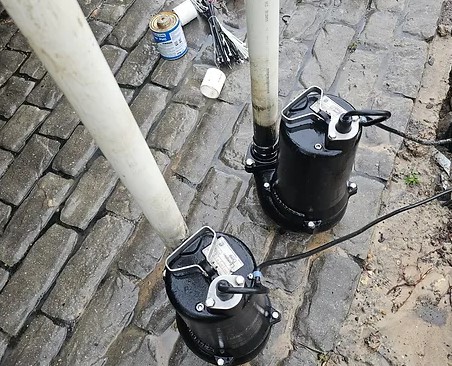
SEPTIC SYSTEM REPAIR
Quite often, an existing septic system will need repair. This could be as minor as replacing small sections of pipe, a pump or an alarm to as major as replacing the tank or drainfield or both. When an existing system is replaced, it is still considered a system repair.
SEPTIC TANK PUMPING
Septic tanks should be pumped at least every three years. In some cases, they may need to be pumped yearly if you are not sure what is going down your drains (e.g. a rental or guest situations where grease may be poured into drains). Over time, waste collects inside the tank and the system needs to be pumped to keep it in good working order. Pumpings are the most important maintenance you can do to keep your septic system working properly. Not pumping your tank often enough will cause raw sewage to enter the drainfield and will eventually clog the drainfield and/or cause plumbing to back up.
SEPTIC INSPECTIONS
Septic system inspections are required when any property is sold or purchased. The septic system on site is evaluated to determine if it will be adequate for full occupancy of the planned home or building. During a septic inspection, the flow to the drainfield is tested to see if it drains or backs up into the tank. The inspection also evaluates the system for any damages to the tank, drain field, or lift station and also checks for any signs of failure. The exact size, length, width, material and elevation of the septic system is recorded as well. The health department will require this information for permitting a new septic system or when any modifications are to be made to an existing septic system.
RESIDENTIAL LIFT STATION MAINTENANCE & INSPECTION
A lift station is necessary when a drain field needs to be placed at a higher elevation due to the water table or if the plumbing coming from a home or building is too deep or too far from the system. It uses a pump to move liquid to a higher elevation or to transport it over long distances. An alarm will notify the owner if the water gets too high and the pump fails to move the liquid. Pumps and alarms should be replaced about every 10 years. Lift station tanks can last a long time, although some concrete tanks can break down from the passing of water up and down inside the lift station and the breakdown can be accelerated by chemicals being flushed into the system. If you have concerns about your lift station, we can perform an inspection to address any possible issues.
COMMERCIAL SERVICES
COMMERCIAL LIFT STATIONS
A sewage backup into your business would be a messy nightmare that could hurt your brand. When this happens, it is usually caused by lift station problems. These commercial lift stations use a minimum ½ HP(horse power) pump to achieve the required pressures in the drain field or sewer system. A pump failure will most likely cause a sewage spill leading to wastewater draining into the groundwater, resulting in harm to the community. Emergency repairs can not only be costly, but could incite violations from your county or city. Regular maintenance will keep your lift station in good working order and prevent these hazards from occurring.
COMMERCIAL DRAIN FIELDS
All commercial systems with a flow of over 1,000 gallons per day are required to be designed by an engineer. There are two different types of commercial drain fields: low pressure systems and drip systems.
A low pressure system has a PVC network within the drain field that has several .5 inch or smaller holes that all have equal distribution. This means that the least effective hole in the network shall deliver no less than 75% of the flow of the most effective hole. The ½ HP pump helps accomplish this. Low pressure systems are designed with control panels that turn the system on when the liquid reaches certain levels and turns the system off when liquid levels go back down. A low pressure system must have sealed ends and those ends must not be looped together.
A drip system has emitters that drip exactly 1.5 gallons per hour. It is a looped system where all the lines are connected, preventing any loss in pressure while the pump is on. Drip systems are also designed with time controllers. These controllers will instruct the pump to turn on for a set amount of minutes every hour unless the building flow is too great, then the system will run continuously until the flows are controlled.
COMMERCIAL MAINTENANCE
As a business owner, it is important that your facilities are well-maintained and functioning to keep daily operations on track. If your business relies on a septic system, any septic issues need to be addressed immediately and repaired correctly. Our job at SkyWalker Septic, is to keep your commercial septic system functioning properly, so you can focus on your business and not on messy expensive septic problems.
GREASE TRAP MAINTENANCE
A buildup of grease, oils and fats is the most common cause of problems with commercial septic systems and lift stations. The less grease down the drain, the better your system will work. As mentioned above, restaurant grease traps usually need to be cleaned around every 60-90 days, but it is possible to prolong service visits by using grease dissolving chemicals that are DEP approved. We will be happy to provide these chemicals and other services to keep your grease trap maintained.
Gallery: Click On topic to view Gallery
CONTACT US
GET IN TOUCH
Ready to discuss your septic system needs? Contact us today to schedule a consultation or service appointment. Whether you need installation, maintenance, repairs, or emergency services, our expert team is here to help.
Experience Exceptional Septic Service Today
Ready to Ensure Your Septic System Runs Smoothly?
Contact Skywalker Septic now to schedule your consultation or service appointment. Our expert team is here to handle all your septic needs with precision and care. Whether you need installation, maintenance, repairs, or emergency services, we’re available 24/7 to serve you in Dade City, FL, and surrounding areas.
@2024 Skywalker Septic LLC. All Rights Reserved

